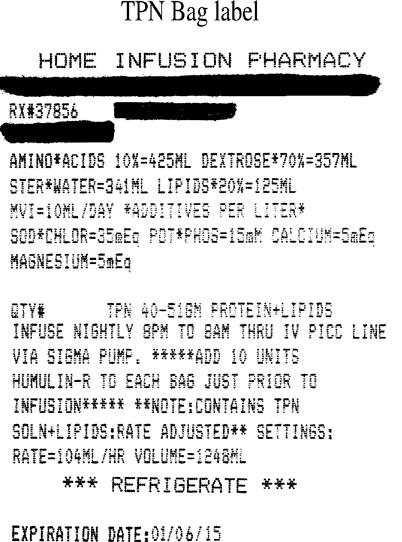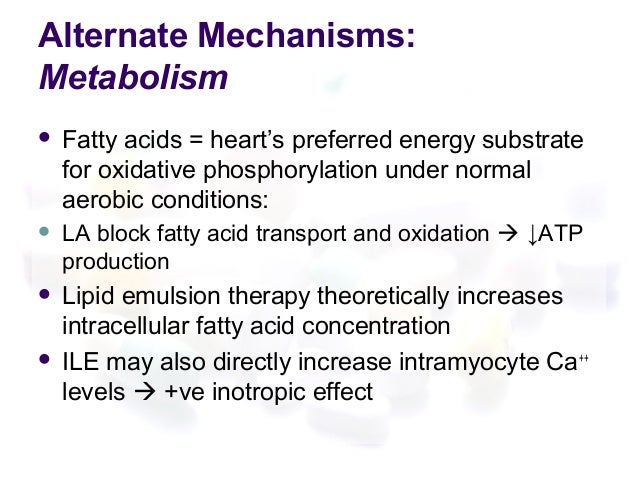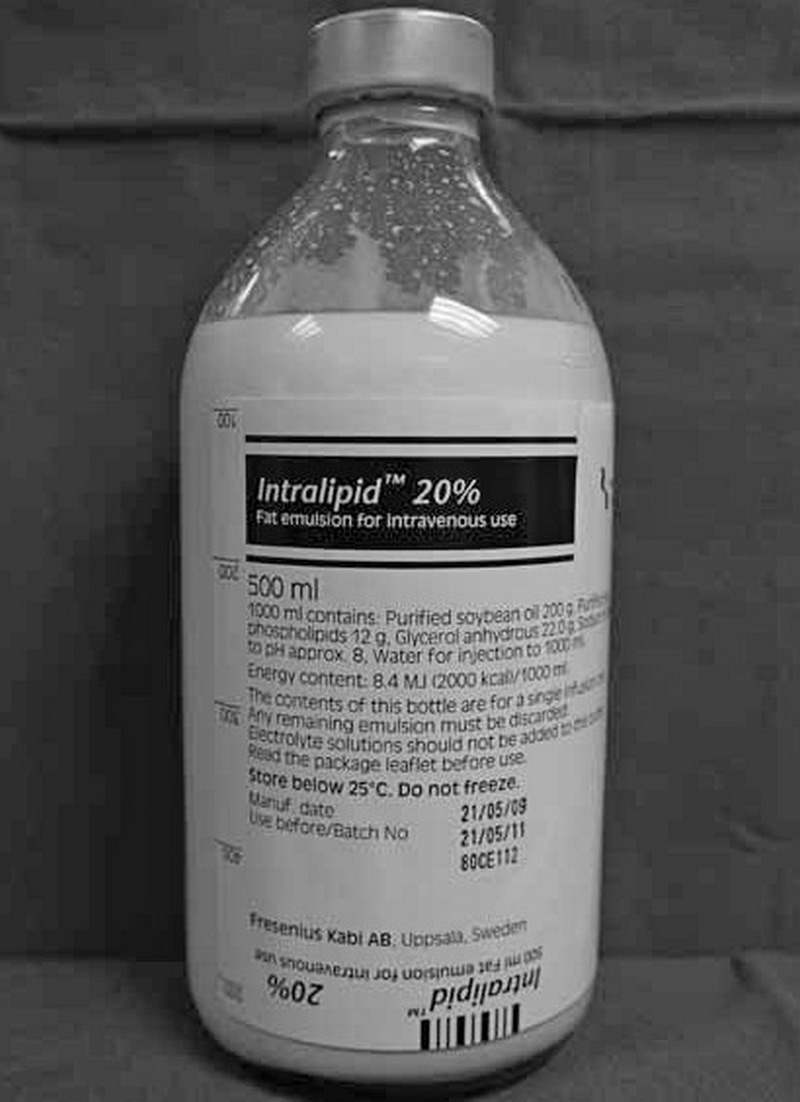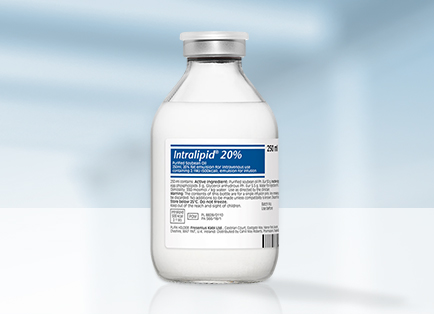

Furthermore, case reports in humans have described the use of lipid therapy to reverse the toxicity of other lipophilic drugs.

Adverse effects of ILE therapy were seen in three patients (20). Intravenous lipid emulsion therapy is an emerging antidote for local anesthetic toxicity, and there is animal evidence that lipid therapy may be efficacious in TCA overdose. Three patients (20) had resistant hypotension, one of whom progressed to pulmonary edema. Administration of intravenous (IV) lipid emulsion can aid in patient recovery in the event of cardiovascular collapse. Lipid emulsion therapy (LET) was used in 6 cases because the patient suffered from hypotension refractory to traditional resuscitation. ILE therapy was effective in 12 patients (80). Furthermore, we introduced lipid emulsion that has recently been in the spotlight as the therapeutic strategy for LAST.ĭental Anesthesia Lipid Emulsions Local Anesthetic Systemic Toxicity.Emulsions of fats or lipids used primarily in parenteral feeding. Background: Intralipid emulsion (ILE) is a nutritional fatty acid supplementation that is emerging as a potential therapy for local anesthetic systemic toxicity and is also being considered as a therapy for other lipophilic medication intoxications. Drug exposures included CCBs (n 8, 53.3), CCBs and paracetamol (n 1, 6.6), and BBs (n 6, 40).

We reviewed the incidence, mechanism, prevention, and treatment guidelines, and a serious complication of LAST occurring due to dental anesthesia. However, caution must be observed for >1000 mL of injection, which is the maximum dose. After bolus injection, 15 mL/kg/h of lipid emulsion is to be continuously injected for LAST. Intravenous lipid emulsion therapy has the potential to reduce rehabilitation time, save resources, and increase survival of sea turtles and other marine animals experiencing brevetoxicosis. According to the recently published guidelines, 20% lipid emulsion is to be intravenously injected at 1.5 mL/kg. Issues associated with ILE use are distinctly different from oral fat and arise from emulsion stability, dose, and infusion tolerance. Although lipid emulsion is commonly used for parenteral nutrition, it has recently been widely used as a non-specific antidote for various types of drug toxicity, such as LAST treatment. Lipid injectable emulsions (ILEs) are complex pharmaceutical formulations intended as a source of energy and fatty acids (FAs) for parenteral nutrition (PN) therapy. 8 found a general lack of coordinated preparation for these potentially fatal occurrences in US.

Infusion of a lipid emulsion to treat lidocaine intoxication in a cat. Paradoxically, a recent survey by Corcoran et al. Adjunctive therapy with intravenous lipid emulsion and methocarbamol for permethrin toxicity in 2 cats. LipidRescue TM was originally developed to treat local anesthetic toxicity, a potentially fatal complication of regional anesthesia that can also occur in other situations where patients receive. According to the treatment guidelines for LAST, immediate application of lipid emulsion plays an important role. We believe the scientific evidence and clinical experience supporting lipid therapy are now sufficient to justify stocking lipid emulsion at all sites where large doses of local anesthetics are used. LipidRescue resuscitation refers to the intravascular infusion of 20 lipid emulsion to treat severe, systemic drug toxicity or poisoning. To prevent the LAST, it is necessary to recognize the risk factors for each patient, choose a safe drug and dose of local anesthesia, use vasoconstrictor, confirm aspiration and use incremental injection techniques. Predisposing factors of LAST include extremes of age, pregnancy, renal disease, cardiac disease, hepatic dysfunction, and drug-associated factors. Its reported prevalence is 0.27/1000, and the representative symptoms range from dizziness to unconsciousness in the CNS and from arrhythmias to cardiac arrest in the CVS. Observe patient receiving intravenous lipid emusion for 1 hour. If no reaction, then increase to the anticipated hourly rate of intravenous lipid emulsion. Local anesthetic systemic toxicity (LAST) refers to the complication affecting the central nervous system (CNS) and cardiovascular system (CVS) due to the overdose of local anesthesia. Intravenous lipid emulsion test dose intructions: Infuse at 0.1 mL/minute for the first 10-15 minutes (i.e., 1.5ml dose over 15 minutes.


 0 kommentar(er)
0 kommentar(er)
